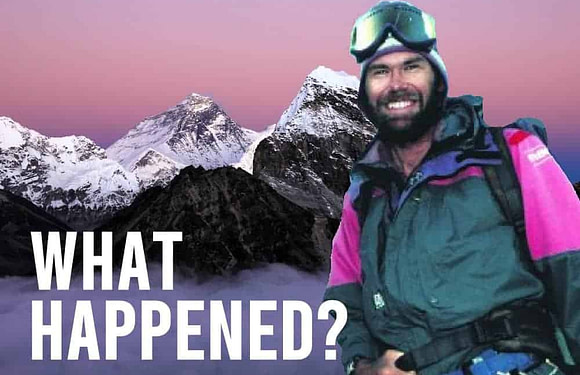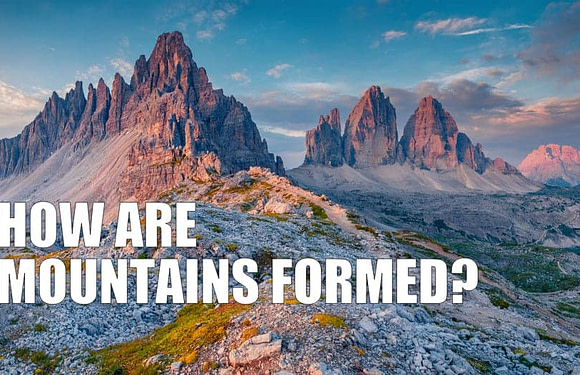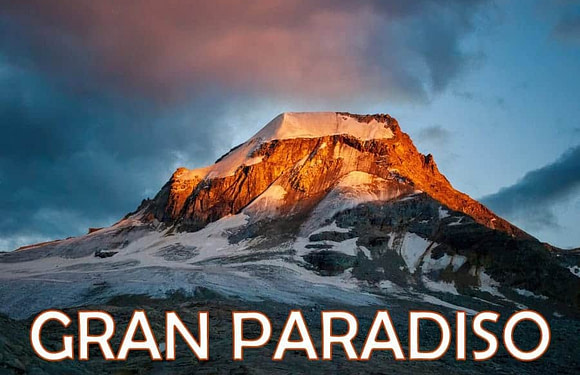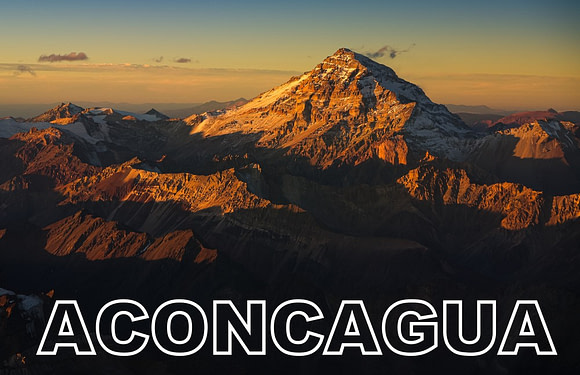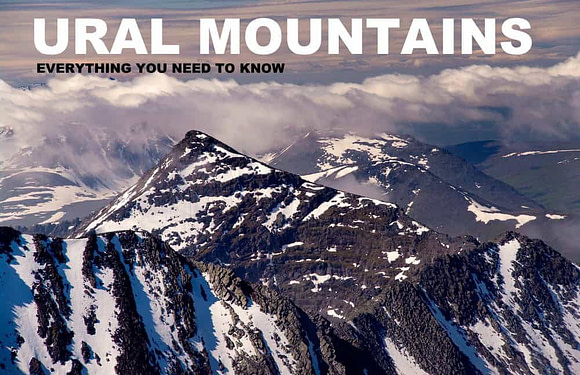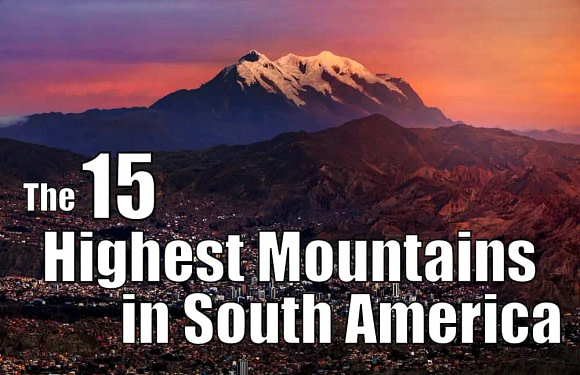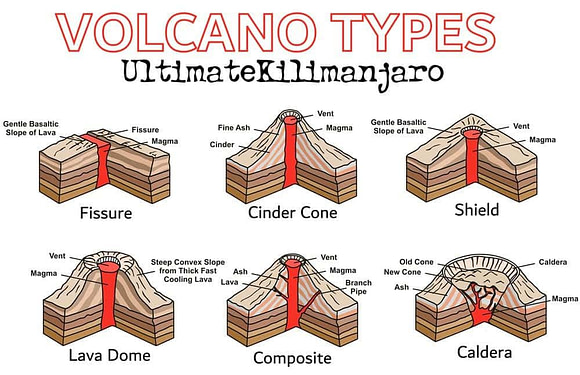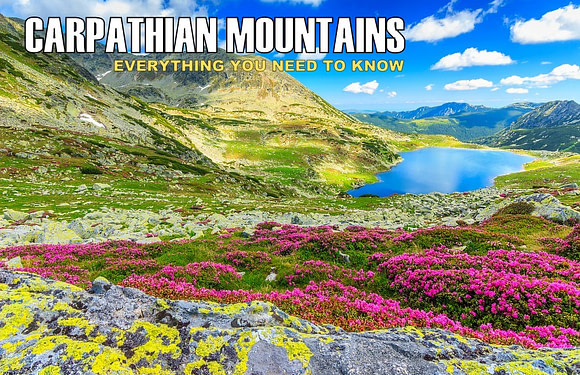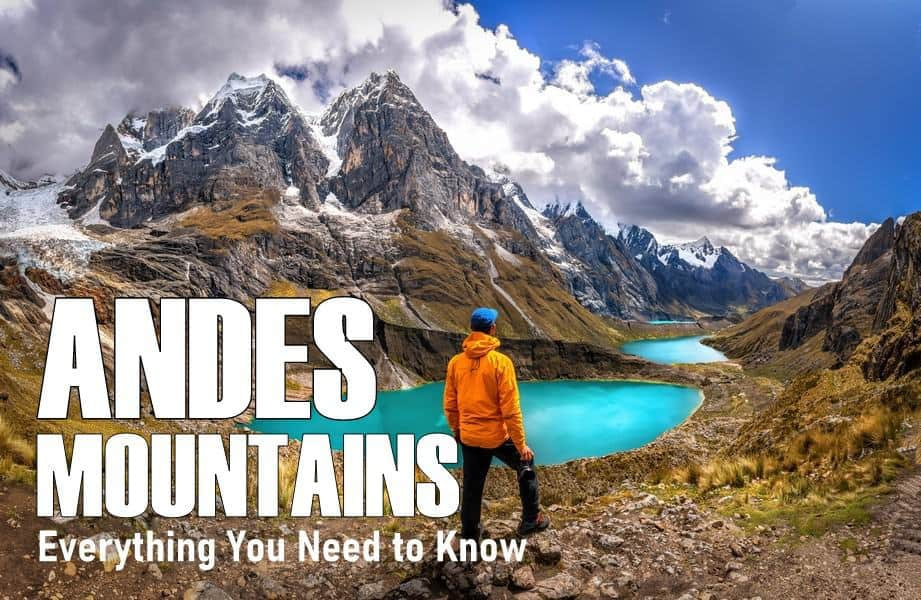
Where Are the Andes Mountains?
The Andes Mountains are situated along the western edge of South America. The range runs across the entire western coast of South America, from Venezuela down to the southernmost tip of the continent.
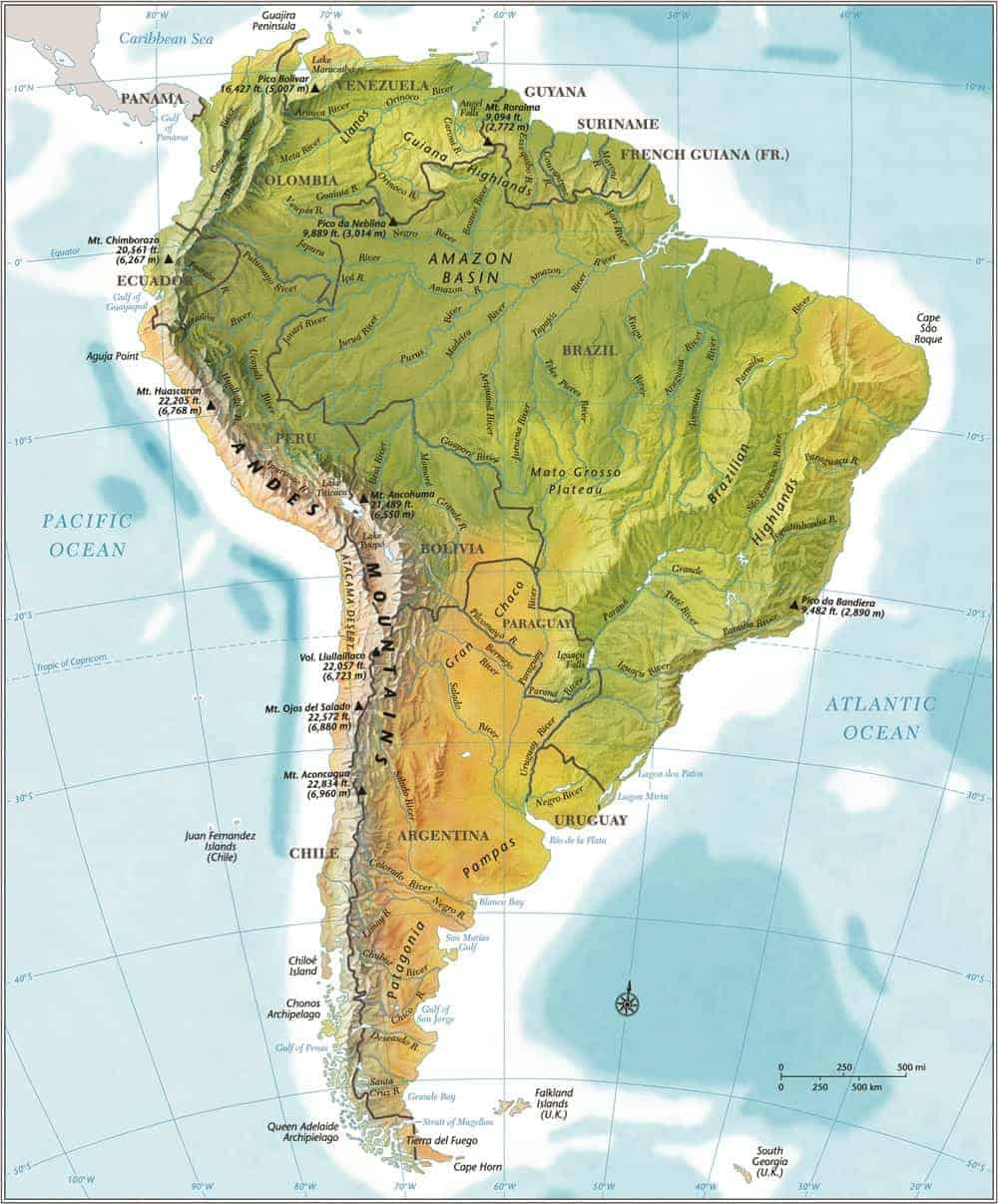
How Long Are the Andes Mountains?
The Andes are the world’s longest mountain range. They stretch over 4,500 miles (7,242 kilometers) from north to south.
For comparison, the longest mountain range in North America are the Rocky Mountains, which are about 3,000 miles (4,820 kilometers) long.
How Big and Tall Are the Mountains in the Andes?
The Andes Mountains are the highest mountain range outside of Asia.
Mount Aconcagua is the highest summit in the Andes and in South America, standing at approximately 22,841 feet (6,961 meters) above sea level. Other notable peaks include Huascarán at 22,205 feet (6,768 meters) and Mount Tupungato at roughly 21,555 feet (6,570 meters).
These peaks represent some of the highest points in the Andes mountain range.

What Countries Are the Andes Mountains In?
The Andes span across seven countries: Venezuela, Colombia, Ecuador, Peru, Bolivia, Chile, and Argentina. The mountain range can be classified broadly into three sections:
- Northern Andes: Ecuador, Columbia, Venezuela, Caribbean region
- Central Andes: Peru and Bolivia
- Southern Andes: Chile, Argentina
Where Do the Andes Mountains Start and End?
The Andes start from western Venezuela in the north and end in southern Chile, in the Patagonia region in the south. Patagonia does not have an official geographical designation, but it is considered to be an approximately 400,000 square mile region shared between Chile and Argentina.
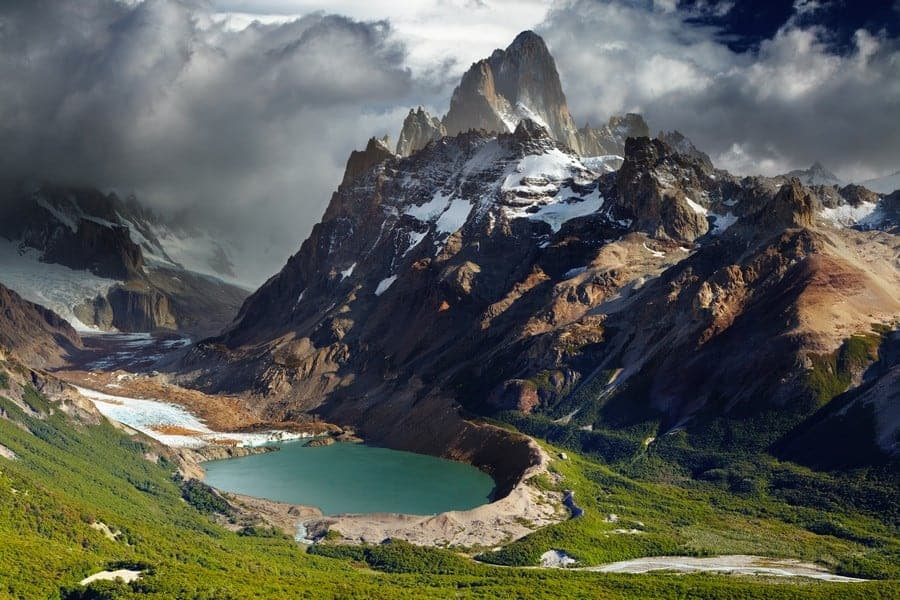
How Did the Andes Mountains Form?
Around 200 million years ago during the Mesozoic Era, the Nazca Plate and the South American Plate collided, initiating the formation of the Andes. The collision of plates triggered the subduction of the denser oceanic Nazca Plate beneath the lighter continental South American Plate.
As the oceanic plate plunged beneath the continental crust, magma surged upward. Over eons, intense tectonic movements and volcanic activity, combined with uplifting forces, sculpted and elevated the Andes. This dynamic geological process continues to shape this awe-inspiring mountain range, endowing it with its remarkable peaks, deep valleys, and diverse ecosystems. The Andes are fold mountains.
What are the Most Famous Destinations in the Andes?
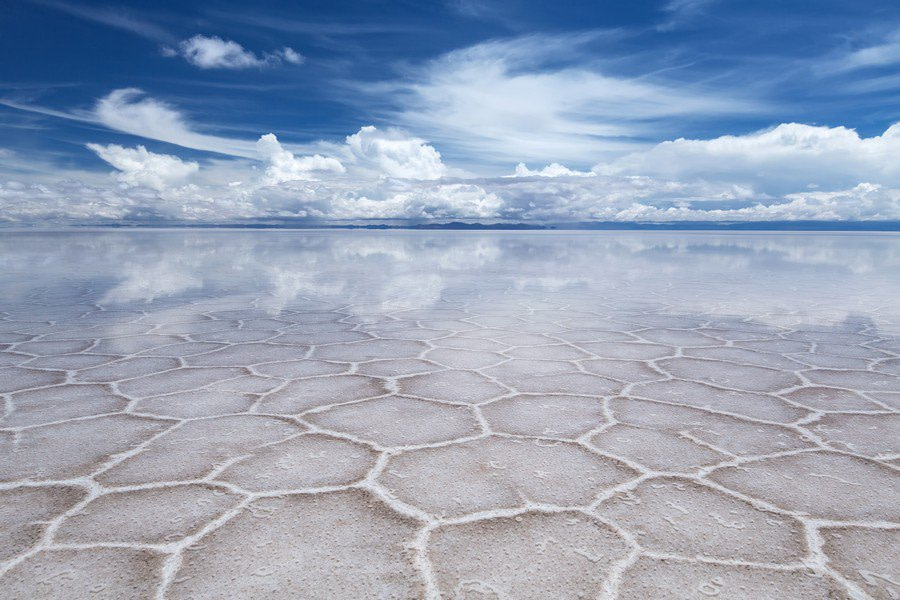
The Andes Mountains boast many famous places:
- Salar de Uyuni, Bolivia: The world’s largest salt flat, offering an otherworldly landscape of vast white plains and stunning reflections of the sky.
- Machu Picchu, Peru: This ancient Incan city set high in the Andes is a UNESCO World Heritage Site and a major archaeological wonder.
- Patagonia, Chile and Argentina: Known for its breathtaking landscapes, including glaciers, mountains, and pristine wilderness.
- The Sacred Valley, Peru: The Sacred Valley hosts ancient Incan ruins, quaint villages, vibrant markets, and terraced agricultural fields.
- Torres del Paine National Park, Chile: Home to stunning granite peaks, glaciers, and diverse wildlife.
- Cusco, Peru: Once the capital of the Inca Empire, Cusco is a historical city renowned for its rich cultural heritage, Incan ruins, and vibrant markets.
- Galapagos Islands, Ecuador: An archipelago famous for its unique wildlife, including giant tortoises and diverse marine species, contributing to its designation as a UNESCO World Heritage site.
- Lake Titicaca, Peru/Bolivia: The highest navigable lake in the world, revered by indigenous communities and home to traditional cultures on floating islands.
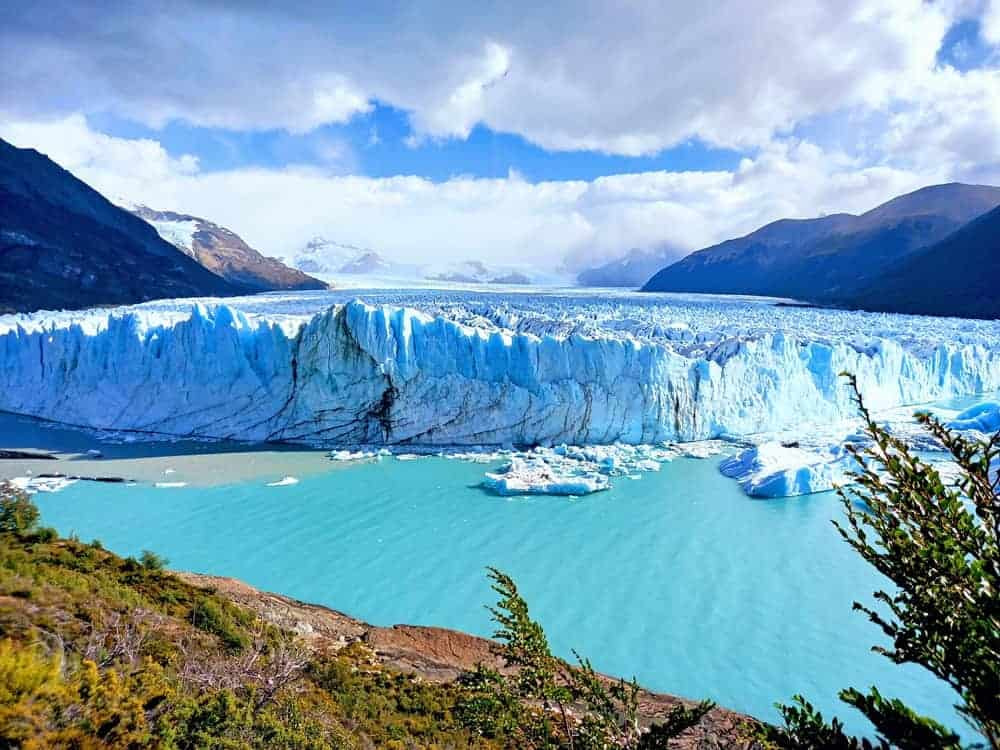
- Perito Moreno Glacier, Argentina: A rare advancing glacier found in Argentina’s Los Glaciares National Park
- Quito, Ecuador: Ecuador’s capital nestled in the Andes, boasting a well-preserved historic center, colonial architecture, and panoramic views from its surrounding peaks.
- Torres del Paine National Park, Chile: A natural wonderland with iconic granite peaks, glaciers, lakes, and diverse wildlife, offering some of the best trekking experiences in South America.
- Aconcagua, Argentina: The highest peak outside of Asia, attracting climbers from around the world seeking to conquer its 22,841-foot (6,961 meters) summit.
- Colca Canyon, Peru: One of the world’s deepest canyons, where visitors can admire breathtaking landscapes, spot Andean condors, and explore traditional villages.
- Atacama Desert, Chile: The driest desert globally, with surreal landscapes, salt flats, geysers, and stargazing opportunities in one of the best astronomical observation sites.
- Huascarán National Park, Peru: Home to the Cordillera Blanca, this park offers spectacular trekking amid glaciers, high-altitude lakes, and stunning mountain vistas.
- Cotopaxi National Park, Ecuador: Showcasing the impressive Cotopaxi volcano, this park offers hiking, mountain biking, and breathtaking views of the Andean landscape
What are Notable Peaks in the Andes?
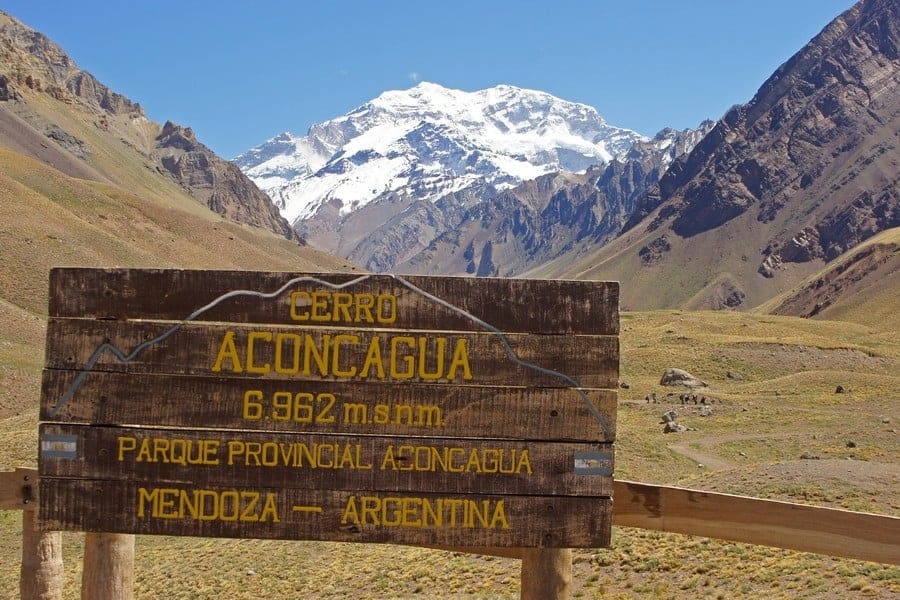
The Andes have many notable peaks:
- Aconcagua, Argentina: The highest peak in the Andes and the Western Hemisphere, reaching 22,841 feet (6,961 meters) above sea level.
- Huascarán, Peru: Standing at 22,205 feet (6,768 meters), it’s the highest peak in Peru and the third highest in the Americas.
- Yerupajá, Peru: Known for its imposing south face, this peak is 21,709 feet (6,617 meters) tall.
- Mercedario, Argentina: Rising to 22,211 feet (6,720 meters), it’s one of the highest peaks in the Cordillera de la Ramada.
- Illimani, Bolivia: This prominent peak reaches an elevation of 21,122 feet (6,438 meters).
- Coropuna, Peru: At 21,079 feet (6,425 meters), it’s the highest volcano in Peru and the third-highest peak in the country.
- Ojos del Salado, Chile/Argentina: The highest volcano in the world and the second highest peak in the Andes, standing at 22,615 feet (6,893 meters).
- Tupungato, Argentina/Chile: This mountain reaches an elevation of 21,555 feet (6,570 meters).
- Chimborazo, Ecuador: Though not the highest by elevation (20,548 feet / 6,263 meters), its location near the equator makes its summit the farthest point from Earth’s center.
- Monte Pissis, Argentina: Standing tall at 22,287 feet (6,793 meters), it’s the third-highest peak in the Andes and the world’s highest volcano.
- Cerro Bonete, Argentina: Reaching an elevation of 22,657 feet (6,880 meters), it’s among the highest peaks in the Andes.
- Ampato, Peru: Standing at 20,702 feet (6,309 meters), it’s known for being the location where the Ice Maiden (Juanita) was discovered.
What are the Best Hikes in the Andes?
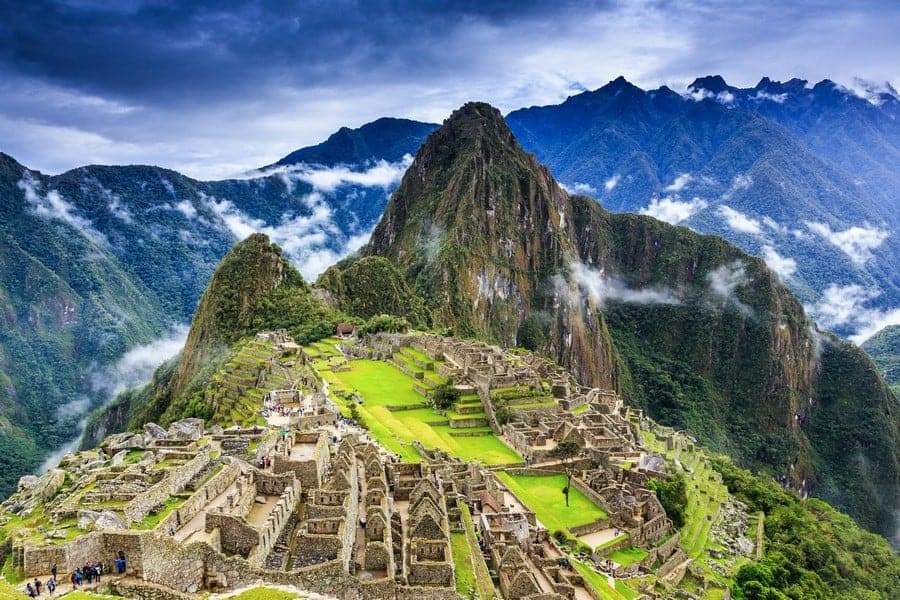
The Andes have many famous hikes:
- Inca Trail, Peru: A famous trek to Machu Picchu, traversing ancient Incan trails.
- Cordillera Huayhuash, Peru: Known for its breathtaking scenery and high-altitude trekking routes.
- Santa Cruz Trek, Peru: In the Cordillera Blanca, the Santa Cruz Trek is a 31-mile (50-kilometer) route.
- Quilotoa Loop, Ecuador: This multi-day hike offers a glimpse of Ecuador’s rural life and stunning landscapes through Andean villages, verdant valleys, and Quilotoa Crater Lake.
- Ausangate Trek, Peru: Circumnavigates the sacred Mount Ausangate, showcasing colorful landscapes and remote Andean villages.
- Choquequirao Trek, Peru: A challenging hike to the lesser-known archaeological site of Choquequirao.
- Salkantay Trek, Peru: Winds through diverse landscapes en route to Machu Picchu, offering stunning views of Mount Salkantay.
- Laguna 69, Peru: A shorter hike in the Cordillera Blanca, leading to a striking blue alpine lake.
- El Chaltén Trails, Argentina: Various trails exploring the peaks and glaciers around El Chaltén, known as Argentina’s trekking capital.
- Cocora Valley, Colombia: Hike through lush landscapes dotted with towering wax palm trees, Colombia’s national tree.
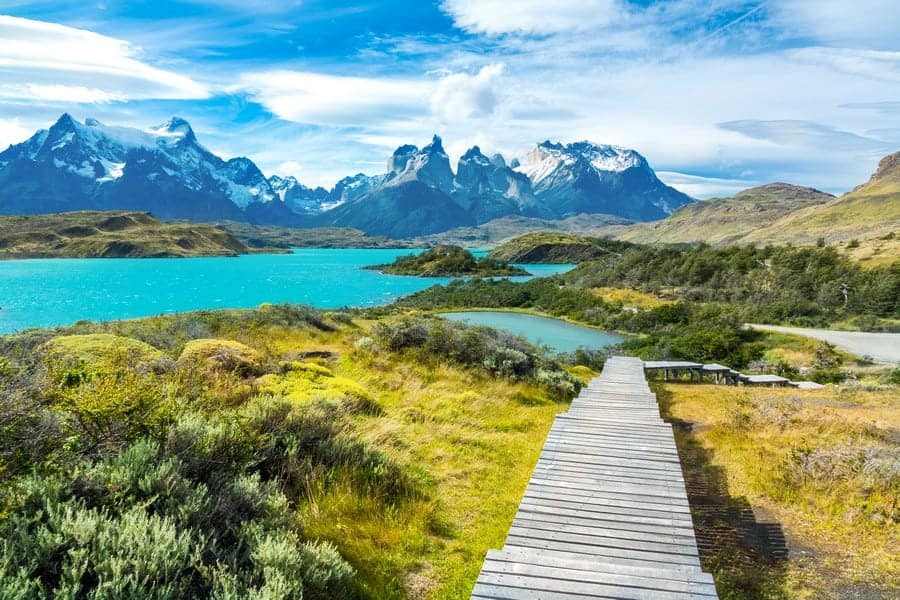
- Torres del Paine Circuit, Chile: A challenging yet rewarding trek featuring stunning landscapes.
- Cotopaxi Volcano, Ecuador: Ascend to the snow-capped summit of Cotopaxi, one of the highest active volcanoes in the world.
- Ciudad Perdida (Lost City) Trek, Colombia: Explores ancient ruins nestled deep in the Colombian jungle.
- Huayhuash Circuit, Peru: A challenging high-altitude trek renowned for its stunning mountain vistas.
- Caminho das Missões, Brazil: Follows the historical route of Jesuit missions in southern Brazil.
- Sierra de las Quijadas National Park, Argentina: Offers diverse trails amid stunning geological formations and wildlife.
- Villa O’Higgins to El Chaltén, Chile/Argentina: A remote and challenging trek crossing between Chile and Argentina through pristine landscapes.
- Colca Canyon, Peru: Descend into one of the world’s deepest canyons and witness Andean condors soaring overhead.
- Aconcagua Trek, Argentina: Trek around the base of Aconcagua, the highest peak in the Andes and the Americas.
What is the Weather Like in the Andes?
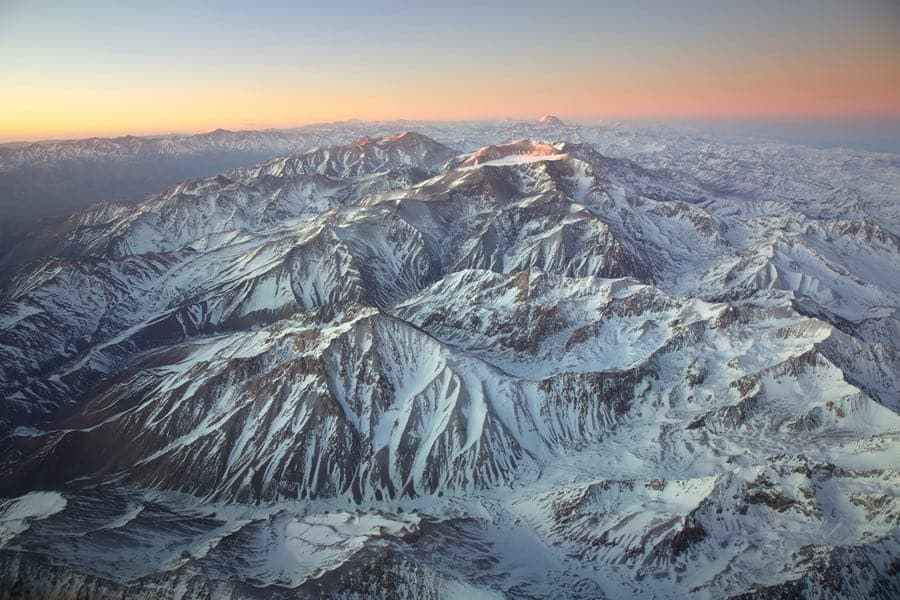
The Andes display diverse climates due to their vast length and elevation variations. The weather depends on the latitude, altitude, precipitation, and seasonal patterns. The weather in the Andes Mountain ecosystem is unusual because other mountain weather on Earth as unstable as this one.
In general, the weather in the highlands is normally dry, and cold. The Northern Andes are rainy and warm. The Central Andes are very dry. And the Southern Andes are rainy and cold. The mountains have a large influence on the climate in the surrounding areas.
What Animals and Plants Live in the Andes?
The Andes are home to an array of flora and fauna, shaped by the diverse ecosystems.
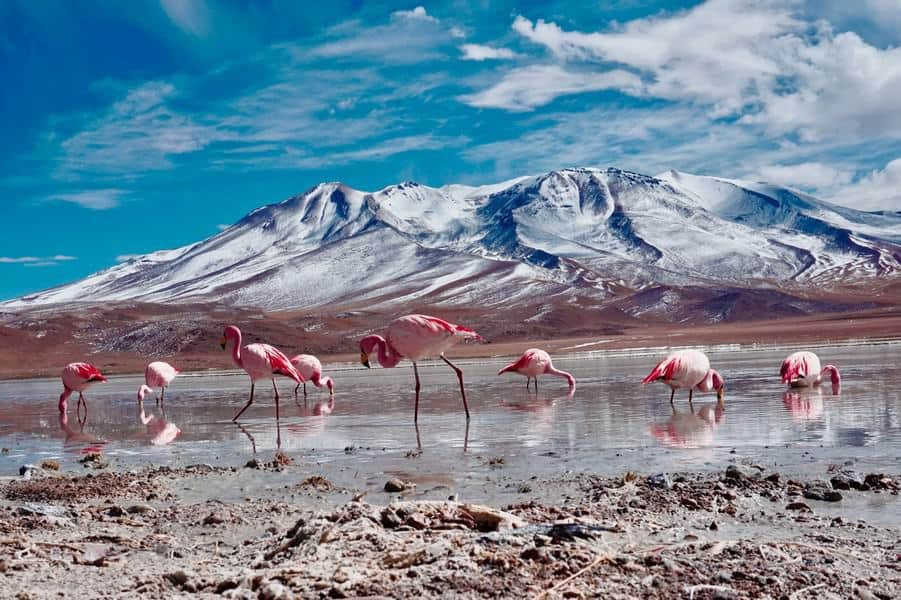
In the Andean cloud forests, diverse birdlife thrives, including the vibrant Andean cock-of-the-rock, the majestic Andean condor, the striking sword-billed hummingbird, and the endangered Andean bear, known as the spectacled bear due to its distinctive facial markings. This ecosystem also hosts a myriad of orchids, bromeliads, and other plants that have evolved to thrive in the cloud forest’s misty and humid conditions.
As elevation increases, the high-altitude páramo and puna regions of the Andes offer a habitat for specialized wildlife. Here, unique species like the vicuña, a wild relative of the alpaca and llama, roam the expansive grasslands. The elusive puma, the South American camelid, the guanaco, and the critically endangered Andean cat, among other species, navigate the challenging terrain of these high-altitude environments.
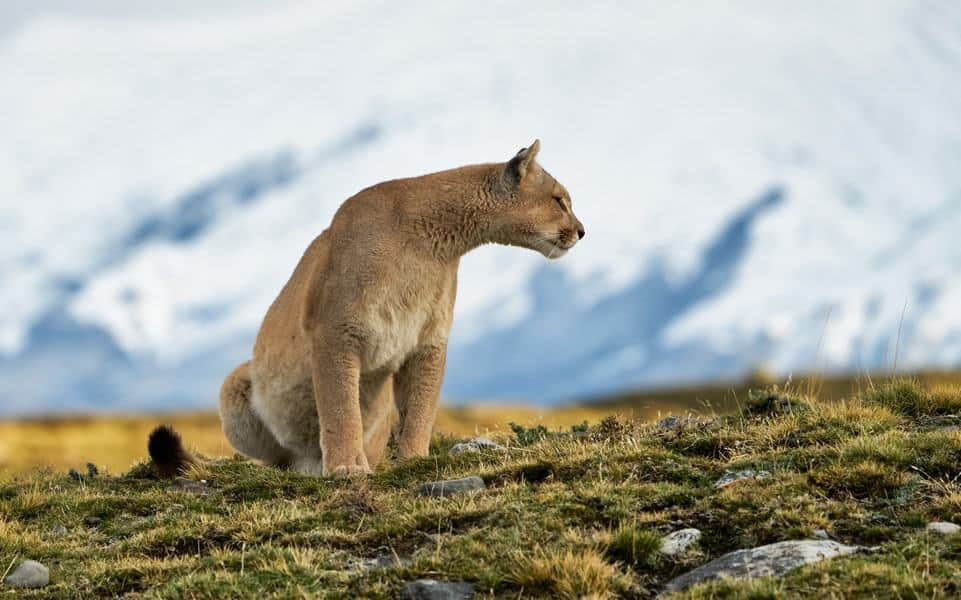
Additionally, the Polylepis forests, recognized for their hardy and ancient trees, stand as one of the highest forests globally and provide a habitat for numerous species adapted to this harsh, high-altitude environment.
Indigenous Peoples of the Andes
The Andes have been home to numerous indigenous groups for centuries. Among these communities are descendants of ancient civilizations like the Incas, Quechuas, Aymaras, Mapuches, and many others.
These groups cultivated advanced agricultural practices, constructed intricate terraces and cities, and developed sophisticated knowledge of astronomy, architecture, and medicine. The Inca Empire, particularly, flourished in the Andes, known for its monumental city of Machu Picchu and the extensive network of roads, showcasing their engineering prowess.
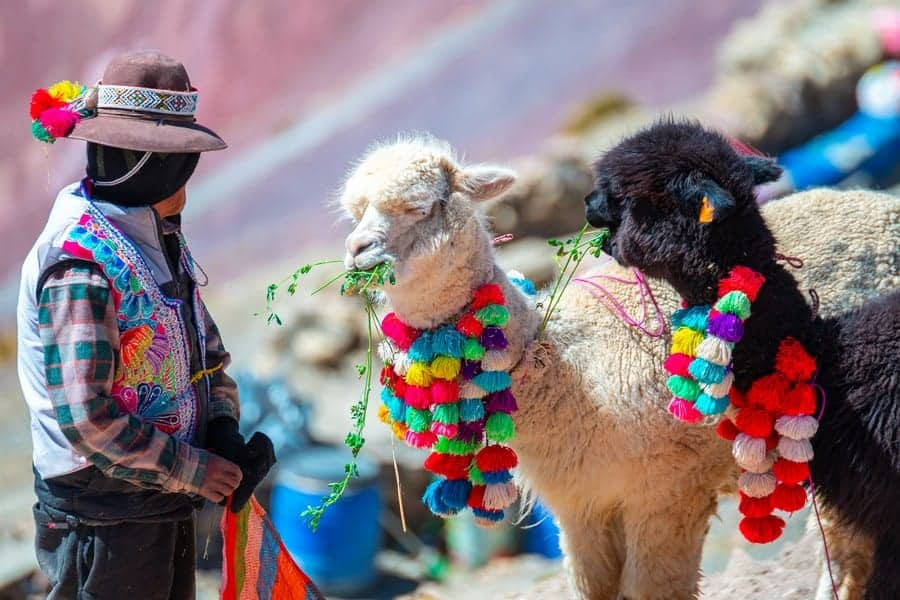
The arrival of Spanish conquistadors in the 16th century brought destruction. The conquest led to the fall of the Inca Empire and the colonization of the Andean region. Indigenous communities endured exploitation, forced labor, and cultural suppression under Spanish rule. The Spanish imposed their language, religion, and social structure, resulting in a blend of indigenous traditions and Spanish influences that are evident in modern Andean cultures.
Despite this, indigenous communities persisted, preserving their languages, traditions, and spiritual beliefs, contributing to the diverse cultural mosaic that defines the Andes today. Efforts to reclaim and celebrate indigenous heritage have gained momentum, advocating for recognition, cultural revitalization, and the preservation of ancestral knowledge and customs.



















































